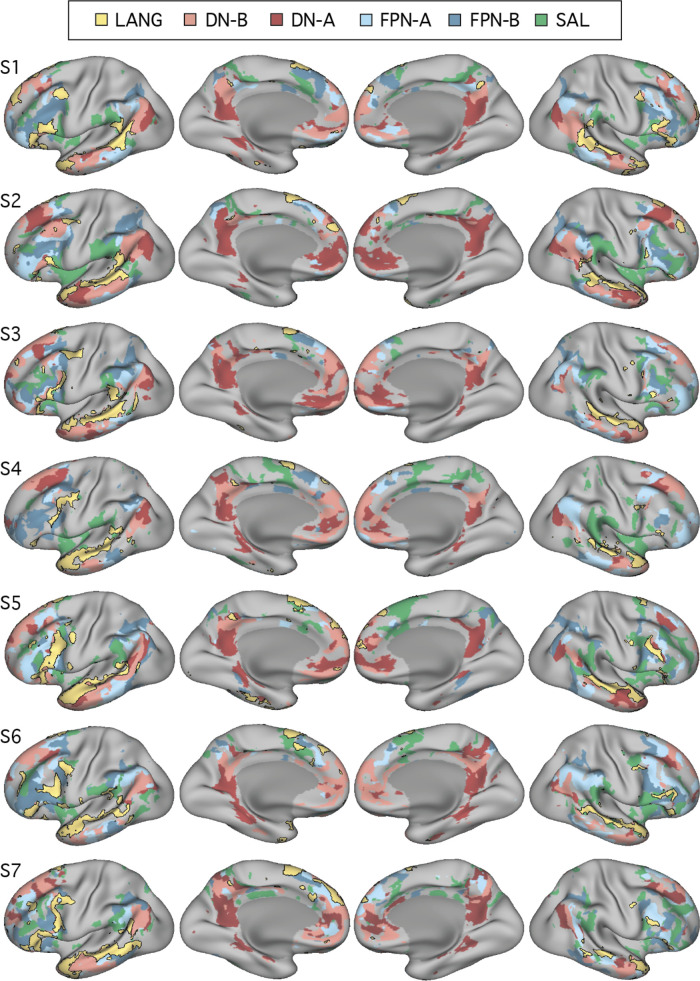Fig. 4.
Close juxtaposition of the candidate language network with neighboring distributed networks revealed by data-driven parcellation. K-means clustering was used to parcellate the cortex into 17 discrete networks. The candidate language network (LANG; yellow and black outline) was observed in all participants (S1–S7). Network regions were recapitulated in all of the nine zones highlighted in Fig. 1, including a region in the temporal pole that extended rostrally. Further regions can also be observed in the right hemisphere. From the parcellation solutions, 5 additional networks were selected for further analysis due to their spatial proximity to the language network and their identification within classic language regions in prior data-driven network analyses (e.g., see Yeo et al. 2011). These networks were the salience network (SAL; green), frontoparietal control network-A (FPN-A) and -B (FPN-B) (blue), and default network-A (DN-A) and -B (DN-B) (red). The LANG network had a complex spatial relationship with these neighboring networks, showing regions closely packed with default, frontoparietal control, and salience network regions in the temporal cortex and inferior and dorsal frontal cortices. The left 2 columns show lateral and medial views of the inflated left hemisphere, whereas the right 2 columns show the right hemisphere.

